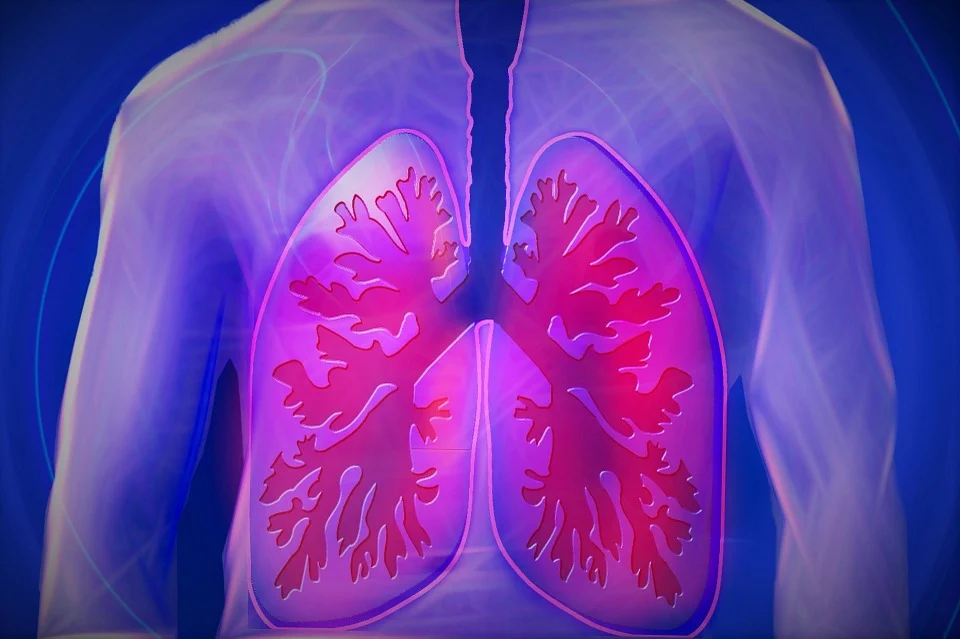Summary
What is pneumonia?
Factors favoring pneumonia
Pneumonia: infectious and respiratory symptoms
Antibiotic treatment of pneumonia
Like many other diseases of the lungs, pneumonia, or lung infection, is an infection of these organs. It is one of a long list of different lung diseases, such as tuberculosis, pulmonary fibrosis, or cystic fibrosis.
What is pneumonia?
Pneumonia is a lung infection caused by viruses, bacteria, or fungi. Hundreds of new pneumonia cases are diagnosed yearly, and thousands die. Let’s see closer below.
This pathology exists in no less than thirty forms since 30 different infectious agents can be the cause, such as:
- influenza and parainfluenza viruses;
- respiratory syncytial virus;
- rhinoviruses;
- herpes viruses;
- SARS coronavirus (severe acute respiratory syndrome) or COVID-19;
- Aspergillus fungi (responsible for pulmonary aspergillosis);
- Chlamydia pneumoniae bacteria;
- Haemophilus influenza bacteria;
- Klebsiella pneumoniae bacteria (responsible for most nosocomial pneumonia);
- Legionellosis (Legionella pneumophila);
- Mycoplasma pneumoniae (especially in young children);
- Staphylococcus aureus.
It is important to note that pneumonia is not severe when a virus causes it.
However, pneumonia is most often caused by pneumococcus (Streptococcus pneumoniae), a bacterium that causes inflammation of the lung alveoli and affects a lobe of the lung (lobar pneumonia).
Good to know: sometimes the bronchial tubes are affected; this is called “bronchopneumonia”.
Factors favoring pneumonia

Although not very contagious, pneumonia is generally caught in the following two cases: when contaminated particles are inhaled or following flu or poorly treated bronchitis that becomes complicated by affecting the lungs.
In some cases, pneumonia is contracted in the hospital following intubation. This is called nosocomial pneumonia, which is generally more serious (it occurs most often in intensive care units but also cases of intubation/tracheotomy).
The people most prone to pneumonia are:
- fragile people: infants, young children, the elderly, and people with a deficient immune system;
- smokers;
- pregnant women;
- people with chronic heart or respiratory conditions.
Whether it is a virus, a bacterium, or a fungus, the pathogen will attach itself to the pulmonary alveoli and develop, causing them to become inflamed. They will fill with pus and mucus and become less effective, resulting in breathing problems.
Note: neuroleptics is associated with a two-fold increase in the risk of pneumonia. Similarly, monoclonal antibodies used in immunotherapy cause pneumonia in 2.2% of patients. Finally, PPIs promote pulmonary infections in people at risk.
Pneumonia: infectious and respiratory symptoms
Pneumonia is characterized by breathing difficulties and poor oxygenation (blue lips and extremities).
Impaired lung alveoli lead to:
- shortness of breath and rapid pulse;
- chest pain when coughing and breathing deeply;
- dry cough for a few days and then a wet cough (in 80% of cases);
- yellowish sputum, sometimes bloody (cough).
Since it is an infection, there is a high fever (38.5-41°C) and chills; fatigue and lack of appetite; and generalized malaise.
The inflammation is sometimes accompanied by nausea, vomiting, and diarrhea.
Antibiotic cure for pneumonia
The treatment of pneumonia depends on the infectious agent that causes it. If it is pneumococcus or other bacteria, targeted antibiotic therapy will be used to eliminate the germs involved.
Good to know: Along with Staphylococcus aureus, pneumococcus is the primary bacterium responsible for hospital-acquired infections and has a 50% resistance rate to penicillin.
If it is a virus, no treatment is necessary. Sometimes antivirals such as oseltamivir (the well-known Tamiflu) are used.
Generally, the following provisions are put in place:
- Infectious symptoms such as fever are relieved with antipyretics such as paracetamol or ibuprofen.
- Respiratory physiotherapy may be instituted to accelerate recovery and avoid complications.
- In severe cases, hospitalization should be considered to prevent dehydration and possibly provide respiratory assistance.
Usually, pneumonia is cured within two weeks.
Please note: in rare cases, complications such as pleurisy or septicemia occur; deaths are also sometimes reported, mainly in frail people.


